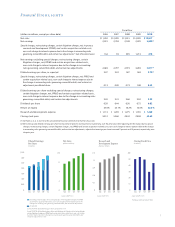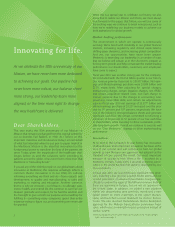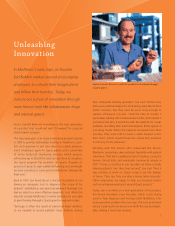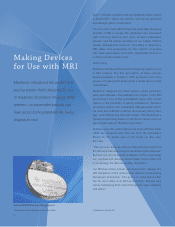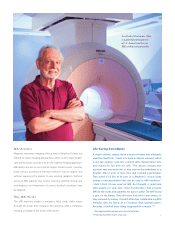Medtronic 2010 Annual Report Download - page 14
Download and view the complete annual report
Please find page 14 of the 2010 Medtronic annual report below. You can navigate through the pages in the report by either clicking on the pages listed below, or by using the keyword search tool below to find specific information within the annual report.
Prior to removing a tumor, surgeons can use our Advanced Visualization and Planning Tool to see the exact location of the tumor, as well as critical
fibers nearby to avoid. The critical fibers are shown in red and green. The tumor is gray on the left scan, and a dark mass on the center and right scans.
Imagine placing a lead wire for a deep brain stimulator in
exactly the right spot of the brain to suppress essential
tremor. Or avoiding critical anatomy in the spinal cord while
removing a tumor. Surgeons can perform these precise tasks
with greater accuracy using Medtronic surgical imaging,
navigation, and intraoperative monitoring tools.
Essentially, these tools help deliver the right information, in
the right format, at the right time to the surgeon and staff.
Key benefits of our surgical tools include:
• A c c u ra c y : Surgeons can see on a screen the exact
location of their instruments in the body. This is especially
helpful deep in the body where sightlines are impossible.
By navigating more precisely, surgeons can perform less-
invasive procedures and help improve clinical outcomes.
• Safety: Operating room staff are exposed to less radiation
than with standard fluoroscopy imaging during orthope-
dic procedures.
• Fe we r R e v i s i o n S u r g e r i e s : Surgeons can confirm
exact placement of therapies within the patient during
surgery, reducing the need for revision surgeries.
Improving
Accuracy and
Safety in the
Operating Room
Since 1991, we’ve been providing surgical
imaging, navigation, and intraoperative
monitoring systems that help surgeons
“see” to deliver our therapies more precisely.
10



